
Most coupon articles show shiny examples, clever creative, and campaign types that "drive conversions." But here’s the thing every seasoned ecommerce operator eventually learns: a coupon campaign isn’t effective because of the idea. It’s effective because of the rules behind it.
A mediocre campaign with great targeting, good constraints, and proper validation will outperform a clever campaign run without guardrails every single time.
II’ve prepared a list of my favorite 20 coupon campaigns with examples from top brands you can introduce to your business right now:
A welcome coupon works because it removes the psychological friction of a first purchase.
The new shopper sees a discount and thinks, "I have nothing to lose." But if you give this to everyone, you attract the wrong customers: one-and-dones who never return.
Best practices:
Where it works:
Welcome coupons work best in high CAC categories, new markets, when trust is the main barrier.

Campaign example:
If a customer signs up for your service or creates an account, send a 10% discount code on the next purchase via a personalized email message. Make the code valid for 48 hours to increase urgency.
A flash sale is a time-limited promotion that evokes urgency and FOMO (fear of missing out). It is one of the most popular and highly-converting examples of coupon promotions for online stores. Flash sales help attract customers in a market cluttered with similar offerings. Indirectly, time-limited promotions play a significant role in influencing the purchase decision.
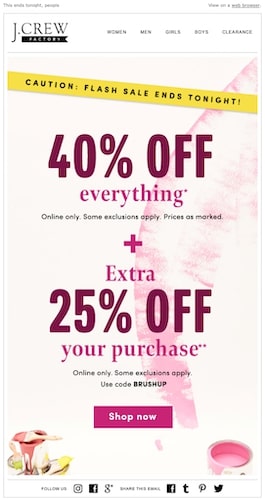
Run a weekend flash sale offering UK customers free shipping for the next 48 hours.
Flash sales can quickly get hijacked. To avoid a flash sale coupon going wild, you can limit the coupon availability to specific locations, customer groups, or order sizes. Even better if you can tie the flash sale coupon to a special event or time of year for event better reception.
For a marketer, there is nothing more heartbreaking than an abandoned cart. You may never know the exact reason why a customer left the store too soon. It may be a loss of interest in the offer, high cost of delivery, lack of a preferred form of payment, or a completely random event that prevented your customers from reaching the end of the purchasing process. However, besides utter disappointment, abandonment orders are also a source of potential recovery. A customer who was already that close to purchasing from you is a precious lead. Such customers already left their contact info and products they wanted. That’s an excellent opportunity to reach out to them with a coupon code for their abandoned cart.
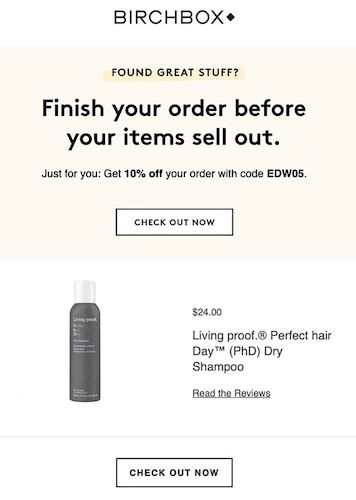
Remind customers about unfinished orders by sending them an email coupon for products from the cart or customers’ wishlist to potentially increase their order size. Make the offer time-limited.
Cunning customers might notice that you are automatically targeting users who didn’t finish their orders and abuse the system by continually abandoning carts in exchange for discounts. To protect your coupon offers from fraud, you should limit the coupon usage to once per customer or to several times per year or quarter.
Combining multiple benefits incentivizes customers to spend more to unlock additional deals, like free shipping or gifts, leading to higher AOVs. Remember that to properly model customer behavior with multi-effect discounts, you need to set thresholds to access additional benefits – for example, only orders above $250 qualify for both the 30% discount and free shipping.

Run a promo campaign that uses a single promo code to unlock a combination of benefits – a flat 30% discount, a gift, and free shipping.
Clearly outline the benefits associated with the promo code on your website, marketing materials, and social media – multiple benefits multiply the terms and conditions of the promotion.
By using a single promo code to trigger different discount values, your marketing team saves precious time setting up separate campaigns for each context. Dynamic discounts make it easy to combine various discount levels within a single promo code and motivate customers to perform specific actions to claim better deals, e.g., sign up for a membership program, or add more items to cart.
Generate a standalone promo code that grants 10% off to guest users and 20% off for loyalty program members.
Thoroughly test your dynamic discount setup before launching the campaign to ensure accurate calculations and desired behavior.
Although happy hour campaigns are primarily used by F&B business, they can be a successful promotional tactic for any company type. Trust me, you don’t have to sell beer to use this strategy. Time-based campaigns are a great way to drive sales in the quiet periods and attract new customers to your store, whatever you’re selling. You can also use it to encourage consumers to purchase sooner than they would otherwise by offering discounts on desirable and fast-moving products in a limited time frame.
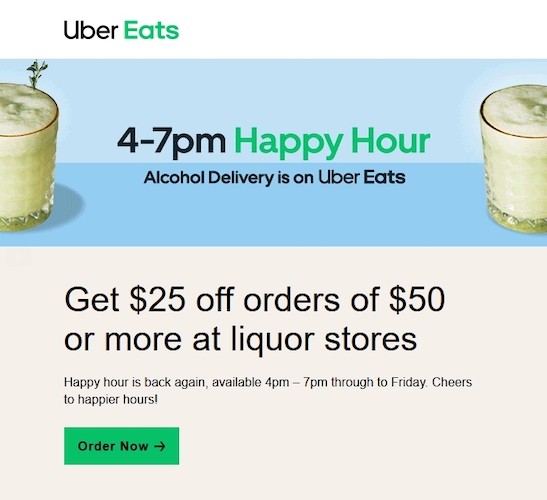
Offer a free night ride for customers who booked the cab in the early afternoon (1 pm to 3 pm).
Before implementing a happy hours campaign, make sure that your business struggles with seasonality. Even more importantly, ensure that your target audience can take advantage of your offer in the specific time window. An example of a failed happy hour campaign would be offering discounted language lessons for kids during school time.
Put a spotlight on a new product or service by offering a unique coupon code only for a specific item in a limited timeframe. You can also drive demand and peak interest by running a pre-launch coupon campaign. You can add a splash of personalization by targeting only specific customer groups to collect a dedicated user base before the product launch, for instance, offer pre-access only to your best customers.
Share a 15% discount code for a new product with your loyal customers. To get some word-of-mouth going, you can also ask for reviews in exchange for an extra 5% off.
Launch and pre-launch coupon campaigns work best when mixed with a bit of exclusivity. Limit the total number of redemptions to make your offer limits and therefore urging. Also, ensure that the coupon code is valid only for selected products.
Sometimes things can go south, and they most likely will (right, Murphy?) But with a compelling coupon campaign, you can quickly fix bad impressions and turn the frown upside down. Sorry coupons are fantastic for improving customer retention and can effectively prevent churn.
If a customer reported an issue, cheer him up with a coupon code for the next purchase. Also, base the coupon code value on the complaint severity level.
Make sure to use unique coupon codes assigned to particular customers to minimize the chances of fraud. Also, limit the redemption to once per customer in a specific timeframe (a year or quarter) to reduce customers’ chances of raising fake support tickets.
With the skyrocketing costs of acquiring a new customer, investing in keeping your customers happy is the best way to help your business grow. Sometimes you need to incentivize dormant customers, and there is no better way to do it than a fun coupon campaign with automatic reminders. Use your knowledge of products your customers like and incentivize them to buy again by offering discounts on selected product categories or items from customers’ wish lists.
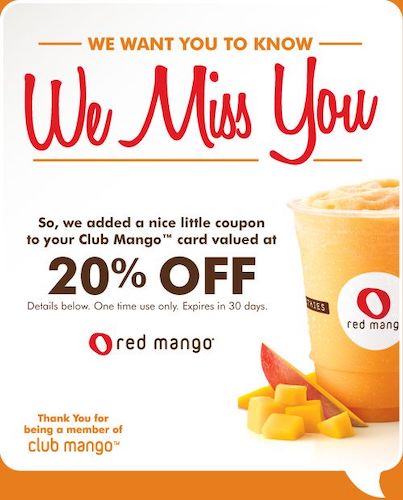
If a customer hasn’t purchased in the last five months, send a 30% discount on products from the customer’s wishlist. You can also use this opportunity to incorporate a short survey into your email to ask customers how you can do better or inform them about a new drop at your store.
Make sure to assign unique codes to chosen customer profiles and allow redemptions only for the codes’ owners.
Seasonal campaigns are a fantastic tool to plan your promotional calendar. Pre-planned marketing efforts let you delight customers with creative promotions throughout the year. You can use public holidays or more private celebrations to captivate your customers. By focusing on customer-centric occasions like birthdays or anniversaries, you show your customers how much you appreciate them.
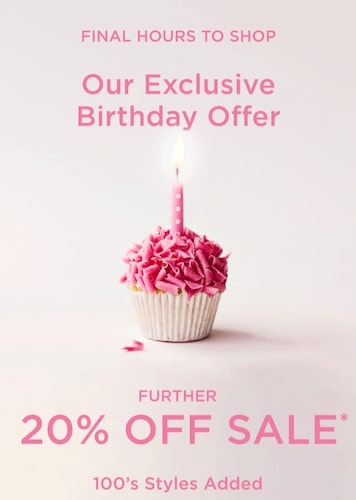
Send a 25% coupon code wrapped in an email with birthday wishes, available only on customer’s favorite product categories.
Base the coupon value on the customer lifetime value and offer better deals to the most loyal customers. Make the codes redeemable only once per customer to prevent fraud attempts.
With over 92% of customers trusting word-of-mouth marketing, you need to incentivize happy customers to give you a positive rating or a review in exchange for a coupon code. Nothing is ever free, eh? User-generated content is the Holy Grail of digital marketers. You should try sending a follow-up email to customers after the purchase, asking them for positive reviews.
If a customer left a positive review on a specific site, send a 15$ coupon code for the next order.
Make sure to set up the minimum required length of the review to avoid customers getting discounts for 1-word long feedback. Also, make the coupon available only once to customers and block the same profiles from receiving the offer twice.
Keep customers engaged throughout more extended periods by offering coupon campaigns that increase in value with each order. Encourage repeat sales by providing your customers with an incentive to come back and buy again from you. Another psychological trick applied in this strategy is getting customers to spend more now to save more with their next purchase.
Besides a coupon campaign, you should consider launching a loyalty program to target customers who have already purchased from you multiple times. After all, taking care of the high-value customers brings the highest ROI in the long run.
Offer 5$ off for new customers, 10$ off for the 2nd order, and 20$ off for the third order.
To limit the scope for fraud, make sure to make your coupons limited in time and redeemable only once per customer. You can add extra limits to your coupon codes, like excluding certain products from the discount, to effectively safeguard your budget.
Coupons for specific product categories are an excellent way to get rid of slow-moving inventory. It is also a great way to personalize your offers more. Ensure that the product categories are complementary to increase your chances of success, or offer discounts on products from the customer’s wishlist to make your offer even more targeted. Instead of providing a discount on the selected product, you can also add them to the order for free.
If a customer purchased swimwear in the last seven days, send a personalized email with a 10% coupon code on all sunglasses.
Control your stock and make sure that related products are always available. Make your codes hard-to-guess to minimize the risk of fraud. Also, make this offer redeemable only once per customer.
Gated coupons are promotions targeted at members of a particular social group, such as students, veterans, or healthcare workers. Throughout the year, there are multiple occasions to celebrate those whose outstanding contribution helps us in our daily lives. Based on your corporate values, you may want to engage and celebrate those customers.
The process for redeeming a gated offer is protected by digital verification, a step that checks consumers’ credentials. By using segment-based discounts, you can encourage a shift in customer spending habits in particular social groups. Usually, gated offers are targeted at teachers, students, veterans, or seniors.
One of our customers, Beryl, has released a similar campaign targeted at healthcare workers. Read the case study here.
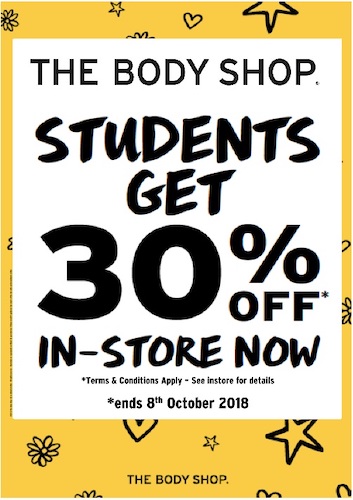
Offer a 10% discount code for college students only.
The digital verification process of your customer’s identity can be tiresome and multifaceted. You can base it on the email domain if you want to target a specific group only (e.g., students from the University of California) or use 3rd party providers to help you conduct a background check (e.g., Unidays).
If you are looking for an effective way to minimize the number of unfinished orders, free shipping coupons and discounts are your best bet. One of the most commonly quoted reasons for cart abandonment is high delivery costs. As established by Baymard Institute, more than 50% of the respondents pointed at high extra fees as the culprit for dropping orders. Delivery cost is the last obstacle on the customer’s path to purchase. By removing it out of their way, you can eliminate customer hesitation and build positive brand associations.
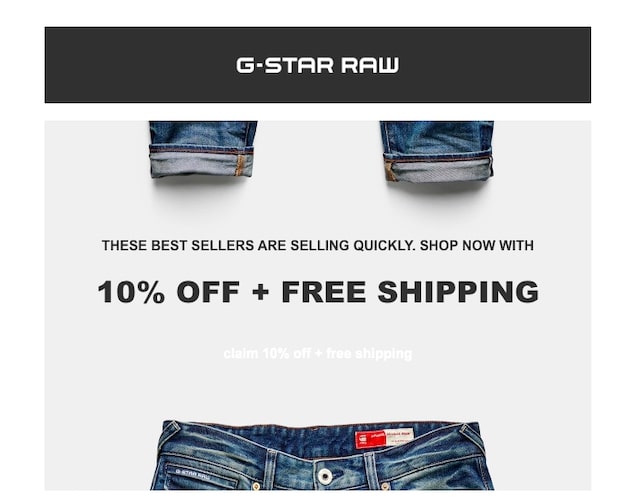
If a customer is from Berlin and made an order for more than 80€, apply a free shipping discount automatically or send a free delivery coupon for the next order.
In the long run, you need to stay profitable. To protect your campaign budget, you can offer free shipping discounts only for predefined locations – postal codes, cities, or countries.
Most businesses miss the boat on reaching out to customers to simply say ‘thank you.’ It can be ‘thank you’ for being with our company for so long or making X number of orders. It’s even a more pleasant surprise if a customer receives a sweet coupon code alongside a cute thank you message.
If a customer made three orders within a month, trigger email automation with a 50% discount code on the next order.
Ensure that the ‘thank you’ message is targeted only at the selected segment.
Who can advertise your store or app best? I’m guessing you. However, bloggers or YouTubers can also be helpful in this area as well. Affiliate marketing is a cooperation model between an online store and an influencer, who in return for advertising your product gets a commission. What do customers get then? Usually, companies opt for a coupon code for the first order.
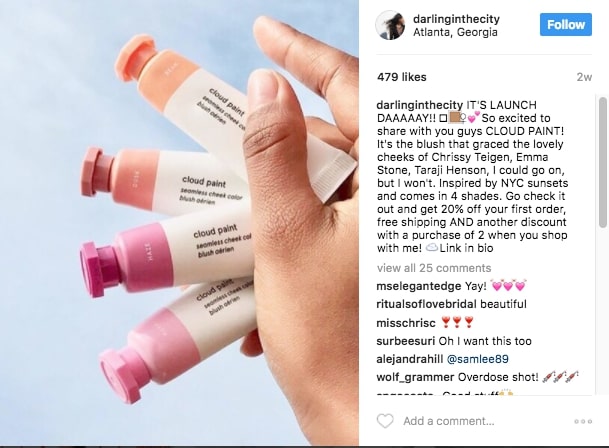
Offer a personalized affiliate link for the influencer, which, when applied in the checkout, gives new customers 10$ off their order.
Choose influencers that are in some way related to your product or app. Otherwise, your product placement is going to feel forced and obscure. Also, make sure that your target audience is within influencers' audience as well.
Is it a bird? Is it a plane? No, it’s a mystery coupon! Mystery coupons are a fantastic way to gamify your coupon campaign. Customers need to draw or choose the discount they want without being told the value of the voucher. Gamification has grown into a great business area with a continually increasing market value. Thanks to unexpected savings at their fingertips, customers are more likely to get into a spending mood and utilize the reward. This phenomenon is called a Windfall Gains, and we wrote about it in this post.

Let customers draw one deal out of three (5, 10, 20%) on your website.
Track customer id to allow client interaction with the drawing mechanism only once. Also, limit the code use in a campaign to once per customer to block more redemptions (even for different codes) for the same customer profile.
CSR stands for Corporate Social Responsibility. CRS is a business model that pays close attention to the interests of stakeholders, communities, and the environment. Coupon campaigns associated with charitable causes are rarely seen as sales promotions in the traditional sense. However, they can still benefit both businesses and customers. For example, by offering discounts on selected products, you can cultivate eco-consciousness among your user base.
Give a 5% discount for customers who purchased a bamboo toothbrush instead of a plastic one.
CSR-inspired campaigns require effort, finances, and position. CSR-guided companies run the risk of losing focus and missing the chance to make a profit for the company and ultimately lose money. That’s why such a campaign should always be well thought out.
Joint promotions are a type of sales promotion that combines more than one brand. Usually, this kind of campaign’s goal is to extend the reach of your business by being exposed to a wholly new market niche. You can select products or services and find partners that will promote them for you via their channels and vice versa. It's truly a win-win scenario for both brands.
As a beauty brand, offer a 15% discount on the spa and relaxation sessions at your partner’s location, which offers your products for sale in their brick and mortar locations.
Joint promotions are never easy to manage – you need to synchronize departments, including legal and marketing teams. Choose at least one person that is going to be responsible for the partnership and who will serve as a point of contact in your organization to streamline communication.
.svg)